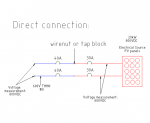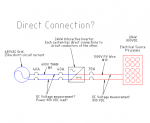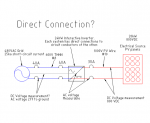jaggedben
Senior Member
- Location
- Northern California
- Occupation
- Solar and Energy Storage Installer
They don't? What about 705.12(B)(5). Fastening. Listed plug-in-type circuit breakers backfed from electric power sources that are listed and identified as interactive shall be permitted to omit the additional fastener normally required by 408.36(D) for such applications.
Maybe it is how you interpret the words... is the "that are listed and identified as interactive" modifying plug-in circuit breakers or electric power sources? Without any commas, you may be right that feeding a breaker from a listed and identified interactive power source is all you need to eliminate the hold down. I was reading it the other way (e.g. there could be plug-in circuit breaker that are listed as "interactive" types and only those don't need the hold down).
So yes, using parentheses in the mathematical sense, it is:
"Listed plug-in-type circuit breakers backfed from (electric power sources that are listed and identified as interactive) shall be..."
not
"Listed plug-in-type circuit breakers (backfed from electric power sources) that are listed and identified as interactive..."
In addition to what others said, I don't believe there is a product standard for listing circuit breakers as interactive. There is such a standard for inverters. Also the two instances of 'listed' are not redundant, one refers to the circuit breakers and one refers to the power sources.




